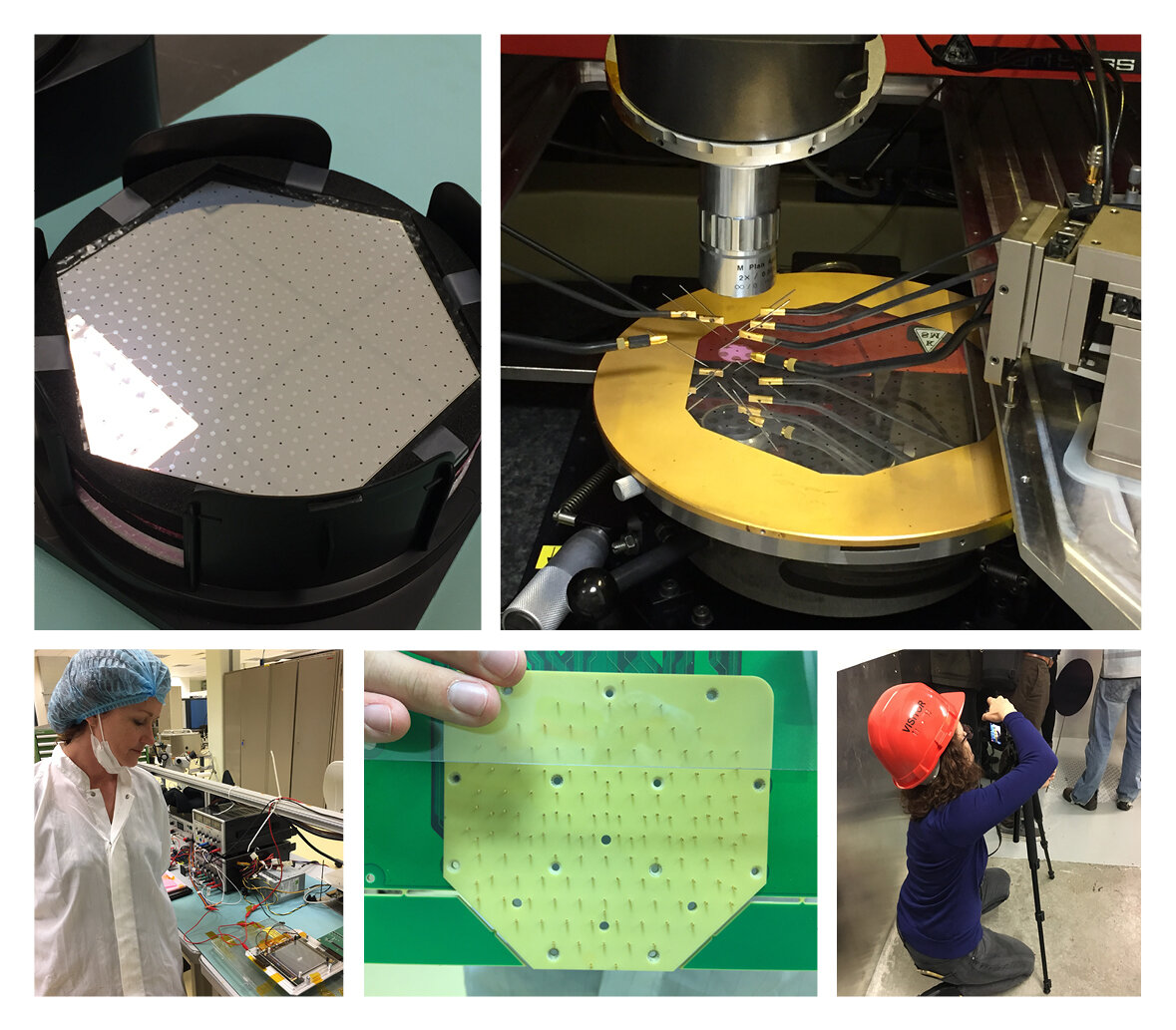CERN with Central Saint Martins
In December 2016, I travelled with Central Saint Martins London MA Art and Science students to CERN, the home of the Large Hadron Collider, near Geneva. Deeply curious about the workings of the largest science experiment in the world, we went behind the scenes on tours, taking in lectures and visiting labs. Hosted by Art @ CMS (CMS is particle detector on the LHC), we met with scientists and staff and developed an understanding of particle physics. Inspired by the trip, I proposed and organised a return trip in May 2017 and co-curated an exhibition titled CSM x CMS Entangled in London in June. Later we created a CERN display window at Central Saint Martins in November 2017. Below is a visual record of our creative journey into the heart of particle physics.
2019/2020 Project Update:
In 2017 during the second visit to CERN, I created a series of images related to silicon particle detectors and was given a personal tour of a silicon wafer testing facility as part of my research. A selection of these images were included during a touring exhibition, organised by Art @ CMS, at CERN (for Open Day in 2019), University of Ghent (KASK) science conference in Belgium (July) and Sofia Tech Park in Bulgaria for their 20th anniversary celebrations working with CERN (November). I curated and launched this final exhibition on behalf of CSM MA Art and Science students and alumni (see short video below).
CERN View 5 (CMS clean room)
As an artist working with glass, I became interested in the materials used in the particle detectors, such as polished and coated silicon. I used a set of mirror-like silicon wafers (acquired via the semiconductor industry in California) mounted on a stick to make a series of images in locations in and around the CMS experiment and CERN environs. Creating surreal views, this series relates to the unprecedented and disorienting information gleaned from silicon detectors within the LHC. The detectors come face to face with the frightening speed of accelerated particles – something humans will never see directly. In the Greek legend, hero Perseus only sees the Gorgon’s head in the reflection of his shield thus protecting him from death. C Type prints on aluminium dibond, 29 x 21cm, edition of 5 (more images available).
Titles (clockwise form top right): CERN View 1 (power pylon), CERN View 2 (nitrogen towers), CERN View 4 (CMS wiring), CERN View 8 (CMS cavern hall), CERN View 3 (CLOUD experiment), CERN View 6 (CMS service area)
Tour of a silicon detector testing facility at CERN in 2017 and photographing with the wafer inside the CMS experiment.
On 9 May 2017, during a second visit to CERN, a group of MA Art and Science students from Central Saint Martins London held a roundtable discussion with scientists on the common ground between art and science. The meeting explored the role of creativity and intuition in both professions. This is a recording of the event held in the cafe of building 40, the headquarters of the CMS experiment. Our thanks to Michael Hoch and Mick Storr from Art@CMS for their help and Angelos Alexopoulos for moderating. Participants were; Jill Mueller, Stephen Bennett, Lisa Pettibone (CSM MA students); Stephen Preece (artist and art educator); John Ellis (theoretical particle physicist), Daniel Denegri (experimental particle physicists), Chiara Mariotti.
Capture, steel and neon, 85 x 43x 30cm, exhibited at CSM x CMS Entangled, Four Corners Gallery, London 2017
Share the Wire, screen print, 60 x 40 cm, exhibited at CSM x CMS Entangled, Four Corners Gallery, London 2017
The Caged Bird Sings, screen print, 60 x 40cm







